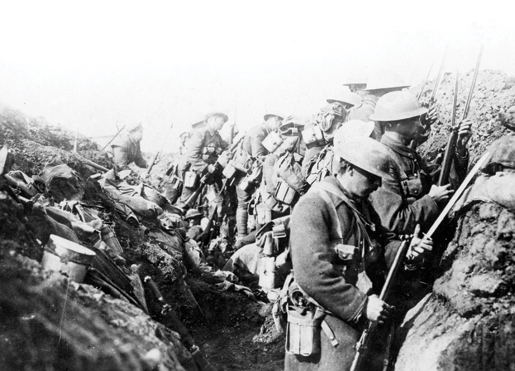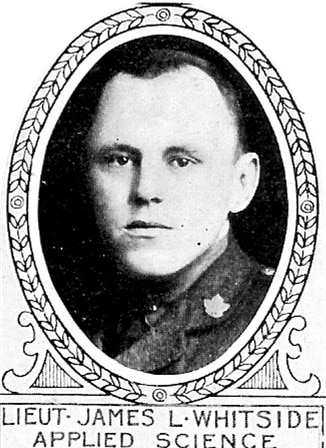In both world wars, there were men killed in action or who died in service who had a connection with Niagara-on-the-Lake but for various reasons were not commemorated on either the memorial clock tower cenotaph in Old Town or the Niagara Township war memorial in Queenston. In some cases, they lived for only a brief time in Niagara and had no family here when the monuments were built. In other instances, they had lived near McNab, not then part of NOTL or Niagara Township. While their names are not read out at the ceremonies at these monuments on Remembrance Day, they too should be remembered.
Ron Dale
Special to The Lake Report
Leroy Whitside was born in Delhi, Norfolk County, on May 25, 1888, the eldest son of Wilbur Whitside and Mary Elizabeth Heath.
Wilbur worked for the Delhi Canning Company and for several years managed the company’s fruit canning factory in Niagara-on-the-Lake.
The factory was active each year from June to December and the Whitsides spent half of the year living in Niagara and the other half in Delhi.
During this period, their children, including Leroy, attended the Niagara Public School on Platoff Street.
Leroy completed secondary school in Delhi and received a bachelor of applied science degree in 1910 from the University of Toronto. Wilbur was then managing his company’s main factory in Delhi and Leroy was given a job there as a civil engineer.
He also became interested in the military and in 1912 he volunteered for part-time service in the Canadian Engineers of the Militia.
After the outbreak of the First World War, he took a more active role, commissioned as an officer in the Active Service Force of the Canadian Engineers, hoping to be posted overseas.
Lieutenant Whitside was sent to Camp Hughes in Sewell, Man., to instruct in trench building. On July 9, 1915, he attested to the 46th Battalion, Canadian Expeditionary Force.
The 46th Battalion (South Saskatchewan) would gain the nickname “the Suicide Battalion.” During the war the battle group fought hard and suffered an incredible number of casualties, with 91.5 per cent of the men who served in the battalion being killed or wounded during the war.
At Camp Hughes, Whitside qualified for the rank of captain but chose to remain as a lieutenant to further his chances of going overseas.
He continued to train, qualifying as a musketry instructor on completion of a course in Ottawa in December. Meanwhile, a draft of the 46th Battalion had been shipped to England in the autumn of 1915.
Those men were then sent to France as replacements for other battalions while more men were recruited back in Canada to reconstitute the 46th.
Whitside was offered the position of second-in-command of the training base at Sewell but chose to remain with the 46th Battalion. Lieutenant Whitside shipped out to England in January 1916 and was assigned to the 5th Division staff as an instructor in trench building.
In August, the rebuilt 46th Battalion was shipped to France and then to the Ypres Salient in Belgium. The men finally entered the front-line trenches facing the Messines Ridge on Aug. 17, 1916.
For the next month they participated in raids into “no man’s land” and rotated from the front line to rest areas in the rear. On Sept. 24 they were marched from that area to St. Omer for additional training.
On Oct. 3, the men left St. Omer and were sent by train to the Somme and again served time manning the trenches, facing the heavily fortified German defences known as the Regina Trench.
The western part of that trench system had been captured in bloody actions in September and October, but the Germans remained strong on the eastern portion.
On Nov. 10, the 46th Battalion was withdrawn from the front line and sent back to a rest camp for what was supposed to be a well-earned break.
However, it was not to be. The men were hastily ordered to march back to the front lines to participate in another attempt to capture the entire Regina Trench.
The battalion went “over the top” through artillery and machine-gun fire and drove the German defenders from their positions.
The Regina Trench had been pounded by constant shelling and was in poor shape when it was captured by the Canadians. Whitside organized the men of his battalion to restore the trench to make it defensible against the inevitable German counter-attacks.
As the men dug out the trench and filled sandbags, the German artillery shelled the position. Lieutenant Whitside was mortally wounded by shrapnel from an exploding shell. He did not live long.
Leroy Whitside, who had once attended school in Niagara-on-the-Lake, is buried in the Contay British Military Cemetery on the Somme, not far from where he fell.
He is remembered each year at the Remembrance Day ceremony at the University of Toronto’s Hart House.
- On the heels of The Lake Report’s 53-part “Monuments Men” series, which exhaustively documented the story of every soldier commemorated on the town’s two cenotaphs, Ron Dale’s “Missing in Action” stories profile Niagara-on-the-Lake soldiers who died in wartime but are not listed on the town’s monuments.











